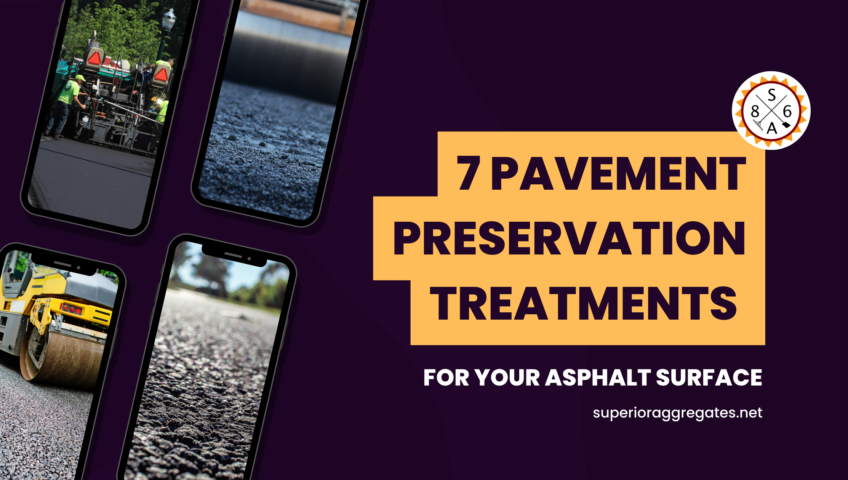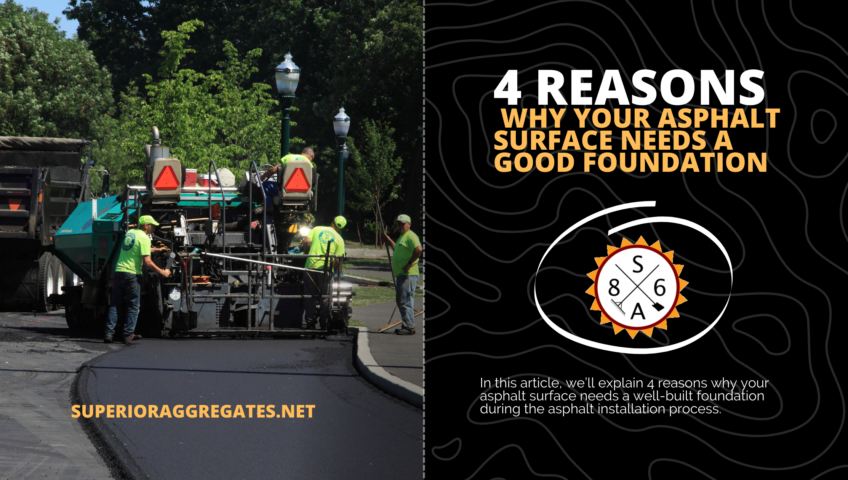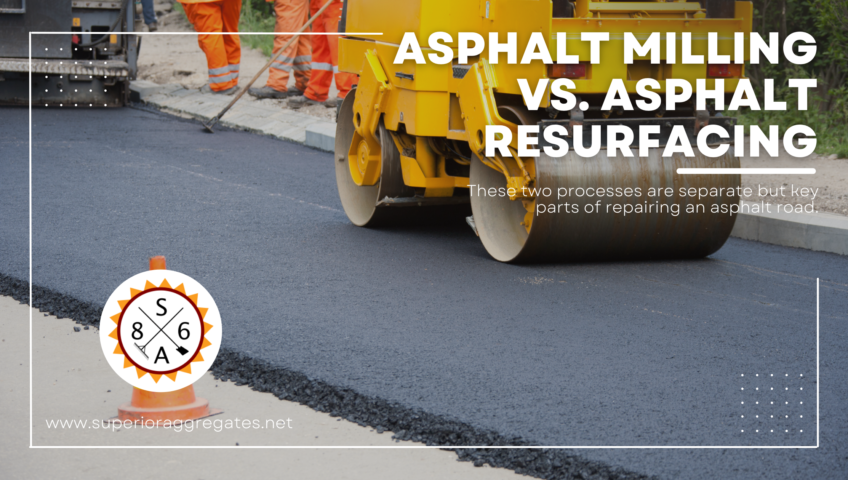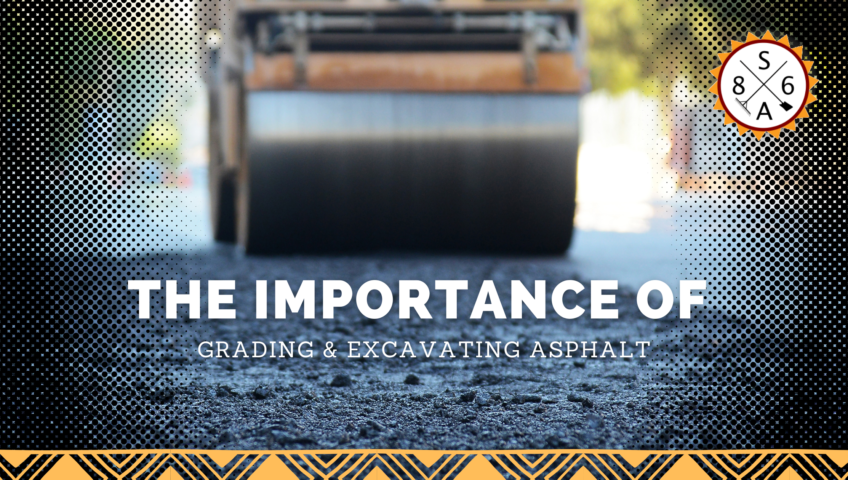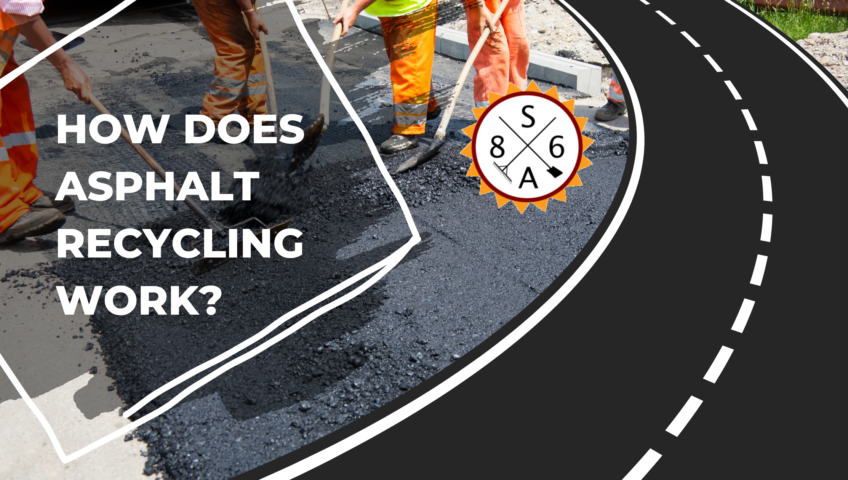
How Does Asphalt Recycling Work?
While you might recycle aluminum cans or plastic bottles at home, many construction companies rely on asphalt paving companies for recycled asphalt. The main material in asphalt, bitumen, tops the global list of most frequently recycled items.
The petroleum product asphalt provides structural strength, can withstand low and high temperatures, plus it can bind together with other materials. Constantly required in the construction of buildings, roads, sidewalks, pools, patios, and much more, this prized substance can also harm the environment to produce. In the US alone, in 2019, manufacturers produced more than 420 million tons of asphalt.
Asphalt paving companies don’t have to use new asphalt though. They can turn to asphalt recycling to reclaim already used asphalt. This reduces its environmental impact. Once recycled, it becomes shingles, waterproofing, or paving products.
Let’s explore how manufacturers mill asphalt, then recycle it, and how it gets used in its most common form – paving.
Asphalt Milling
Asphalt begins the manufacturing process as crude oil. First heated to distill it, the manufacturer then transfers the oil to an extraction container where it removes volatile components called fractions. The heavy deposit leftover – topped crude becomes asphalt after three more steps.
The manufacturer uses a volatile substance to cut back the asphalt. This creates a malleable substance.
Next, the oil goes through an emulsifying process that makes the substance easier to combine aggregate. In this step, the manufacturer grinds the asphalt into tiny globules measuring less than five microns, then mixes it with water. By adding an emulsifying agent like clay, oil, silicate, or soap, the manufacturer reduces the potential for the asphalt and water to separate.
In the final step of making commercial asphalt, the manufacturer pulverizes it to powdered form and sieves it to create granules of a uniform size.
Asphalt Recycling
Asphalt recycling offers a cost-efficient and green method of obtaining this widely used construction material. Recycled asphalt provides no less a product than new asphalt. It provides the same durability and versatility.
Recycled asphalt goes through a milling process in which the manufacturer removes the top layer from the surface on which it got used. This might mean removing the top of a parking lot or driveway or shingling from a rooftop.
Transported to an asphalt plant, the reclaimed product goes through sizing and screening, just as it did when originally made. Unlike its original processing cycle though, when recycled the manufacturer can use either a hot or a cold process to start.
Once it has repeated the original milling process, an asphalt paving company can again use it for a new project. Asphalt offers an ideal construction material since it can undergo multiple recycling cycles without harming its durability or quality.
Asphalt Paving
In some cases, recycled asphalt provides advantages that virgin asphalt cannot. It can contain mineral fillers that increase its strength. It costs less and demands less labor. With respect to its appearance and performance, it offers increased permeability and varying shades of gray. Virgin asphalt comes in black only.
Try Recycled Asphalt
The demand for asphalt continues to grow – about three percent each year. Turn to the $7.1 billion asphalt recovery market for your construction needs. It offers a real money saver for asphalt paving companies.
While you might recycle aluminum cans or plastic bottles at home, many construction companies rely on asphalt paving companies for recycled asphalt. The main material in asphalt, bitumen, tops the global list of most frequently recycled items.
The petroleum product asphalt provides structural strength, can withstand low and high temperatures, plus it can bind together with other materials. Constantly required in the construction of buildings, roads, sidewalks, pools, patios, and much more, this prized substance can also harm the environment to produce. In the US alone, in 2019, manufacturers produced more than 420 million tons of asphalt.
Asphalt paving companies don’t have to use new asphalt though. They can turn to asphalt recycling to reclaim already used asphalt. This reduces its environmental impact. Once recycled, it becomes shingles, waterproofing, or paving products.
Let’s explore how manufacturers mill asphalt, then recycle it, and how it gets used in its most common form – paving.
Asphalt Milling
Asphalt begins the manufacturing process as crude oil. First heated to distill it, the manufacturer then transfers the oil to an extraction container where it removes volatile components called fractions. The heavy deposit leftover – topped crude becomes asphalt after three more steps.
The manufacturer uses a volatile substance to cut back the asphalt. This creates a malleable substance.
Next, the oil goes through an emulsifying process that makes the substance easier to combine aggregate. In this step, the manufacturer grinds the asphalt into tiny globules measuring less than five microns, then mixes it with water. By adding an emulsifying agent like clay, oil, silicate, or soap, the manufacturer reduces the potential for the asphalt and water to separate.
In the final step of making commercial asphalt, the manufacturer pulverizes it to powdered form and sieves it to create granules of a uniform size.
Asphalt Recycling
Asphalt recycling offers a cost-efficient and green method of obtaining this widely used construction material. Recycled asphalt provides no less a product than new asphalt. It provides the same durability and versatility.
Recycled asphalt goes through a milling process in which the manufacturer removes the top layer from the surface on which it got used. This might mean removing the top of a parking lot or driveway or shingling from a rooftop.
Transported to an asphalt plant, the reclaimed product goes through sizing and screening, just as it did when originally made. Unlike its original processing cycle though, when recycled the manufacturer can use either a hot or a cold process to start.
Once it has repeated the original milling process, an asphalt paving company can again use it for a new project. Asphalt offers an ideal construction material since it can undergo multiple recycling cycles without harming its durability or quality.
Asphalt Paving
In some cases, recycled asphalt provides advantages that virgin asphalt cannot. It can contain mineral fillers that increase its strength. It costs less and demands less labor. With respect to its appearance and performance, it offers increased permeability and varying shades of gray. Virgin asphalt comes in black only.
Try Recycled Asphalt
The demand for asphalt continues to grow – about three percent each year. Turn to the $7.1 billion asphalt recovery market for your construction needs. It offers a real money saver for asphalt paving companies.

